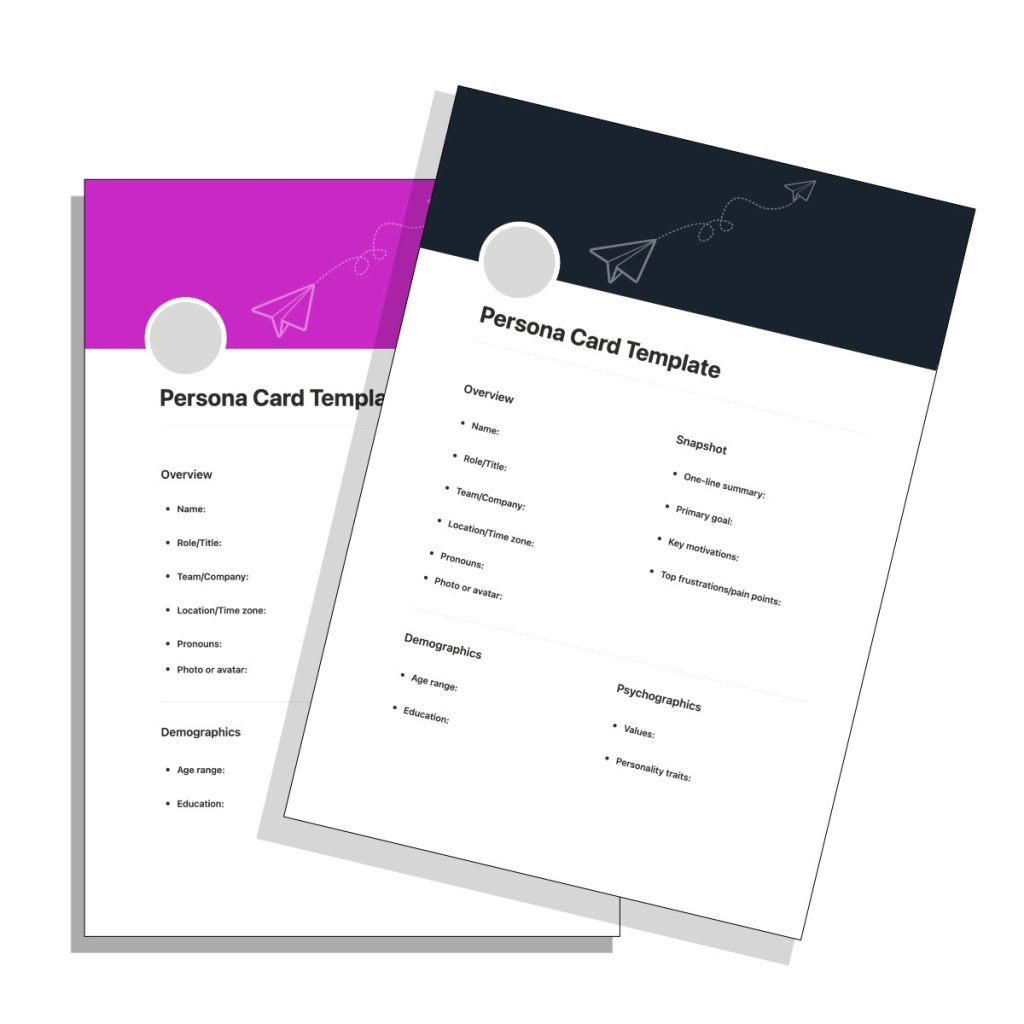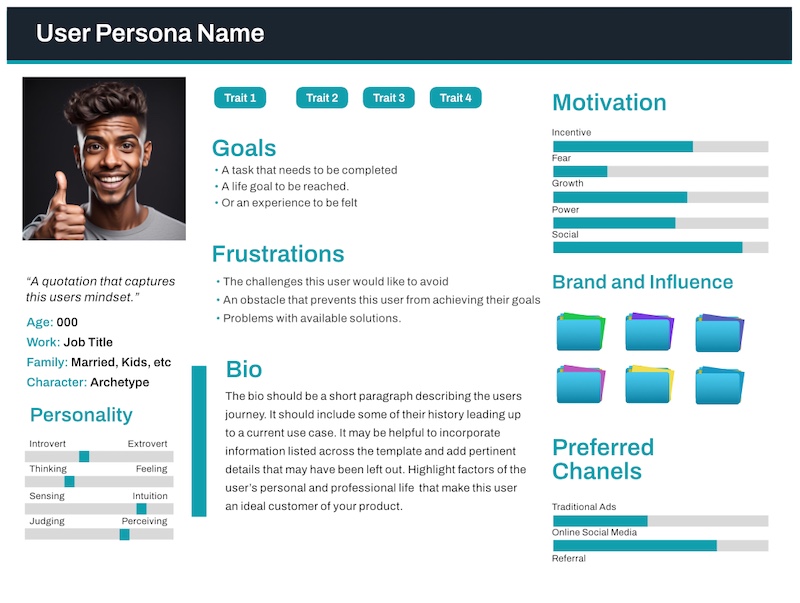Personas and Personalities: The Anatomy of a Persona
Mini-series • Part 3 — Break down the structure of a persona. Learn what components truly matter and how to visualise them for design and marketing strategy.
Overview: Why Persona Anatomy Matters
A persona isn’t a vanity exercise — it’s a functional tool. A well-designed persona distills audience data into something the whole team can visualize, empathize with, and act upon. This structure prevents generic storytelling and helps align decisions around real user motivations.
For an in-depth discussion of persona structure and its marketing context, see Persona Anatomy — Software Folder.
Visual Anatomy Diagram
Below is an image visualizing the typical layout of a persona card and other persona related measurable attributes. Design your own based on the examples provided and your specific needs. For your convenience, as well as an introduction to Notion, feel free to copy our Persona Card template

Practical Templates & Tips
You can build and iterate on personas using tools like Notion, Figma, or Miro. For a proven format, see Project: Definitive Persona 25.

Core Elements of a Persona
Every persona should contain a balance of identifying details, behavioural insights, and design implications. Here’s a breakdown of each section and why it matters.
1. Header / Snapshot
The quick-glance section — includes name, role, photo, and demographic stats. It humanises the profile. Example: “Amira — 29, UX Designer, London”.
2. Background / Story
A short narrative that explains context: their lifestyle, work habits, and motivations. This should read like a concise bio, not a novel.
3. Goals & Motivations
What drives them to interact with your product or service? Focus on why they act, not just what they do.
4. Pain Points
The frictions, frustrations, and barriers they face. This is where empathy begins — designers can map how their work alleviates specific pain points.
5. Behaviours & Preferences
Describe interaction patterns, media habits, and communication tone preferences. Pair with any relevant Big Five insights from Part 2.
6. Quote or Voice
Add a short, believable quote to give tone. Example: “I just want tools that make my process smoother without overcomplicating things.”
7. Design / Marketing Implications
This is where data becomes direction: what should the brand do or say for this persona? Aligns perfectly with UX and content teams.
Quick Best Practices:
- Limit personas to 3–5 key archetypes — too many reduces focus.
- Use real research data as the foundation, not assumptions.
- Update personas regularly after major campaign or UX findings.
- Include actionable cues: tone, design direction, and brand implications.
